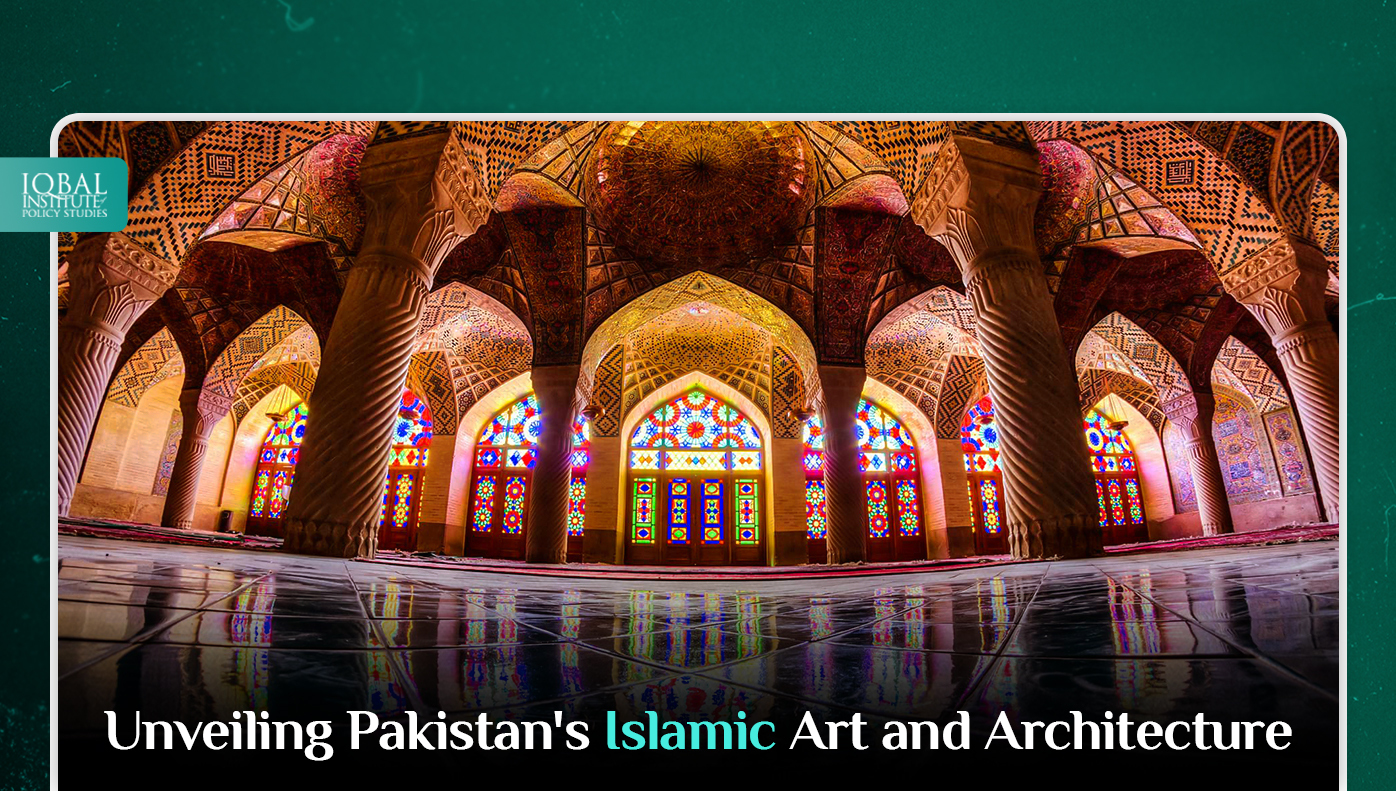Nestled at the crossroads of South Asia, Central Asia, and the Middle East, Pakistan is a treasure trove of Islamic art and architecture. From the awe-inspiring mosques that showcase intricate geometric designs to the historical mausoleums that resonate with centuries of devotion, Pakistan’s architectural heritage is a testament to the rich Islamic tradition that has flourished in the region. In this blog, we embark on a journey to unveil the beauty and significance of Pakistan’s Islamic art and architecture.
The Influence of Islamic Architecture in Pakistan
Pakistan’s Islamic art and architecture have been shaped by a diverse range of influences, including Persian, Central Asian, Mughal, and indigenous elements. This unique amalgamation has given rise to a rich tapestry of architectural marvels that continue to inspire and captivate visitors.
Lahore’s Badshahi Mosque: A Mughal Masterpiece
Our exploration begins with the Badshahi Mosque, located in Lahore, the cultural heart of Pakistan. Built during the reign of Emperor Aurangzeb in the 17th century, this magnificent mosque is a prime example of Mughal architecture. Its grandeur is evident in its massive red sandstone structure and the intricate marble inlay work that adorns its walls and domes. The Badshahi Mosque’s prayer hall can accommodate thousands of worshippers, making it one of the largest mosques in the world. This mosque’s architectural significance lies not only in its size but also in its exquisite details. The use of calligraphy and geometric patterns in the embellishments showcases the precision and artistry of Mughal craftsmen. The Badshahi Mosque is not just a place of worship but a living testament to the Mughal Empire’s cultural and architectural achievements.
Faisal Mosque: A Modern Marvel in Islamabad
In contrast to the historical grandeur of the Badshahi Mosque, the Faisal Mosque in Islamabad represents a modern interpretation of Islamic architecture. Designed by the renowned Turkish architect Vedat Dalokay, this mosque is an iconic symbol of Pakistan. Its unique and futuristic design features a vast prayer hall beneath a striking sloping concrete roof, which gives the impression of a Bedouin tent. Set against the backdrop of the Margalla Hills, the Faisal Mosque offers a serene and contemporary space for reflection and worship. This architectural marvel not only serves as a place of prayer but also as a testament to Pakistan’s forward-looking approach to Islamic architecture.
Multan’s Tombs and Shrines: Sufi Mysticism
Multan, known as the “City of Saints,” is a hub of Islamic spirituality in Pakistan. It is adorned with a multitude of tombs and shrines dedicated to revered Sufi saints. These architectural gems are characterized by their intricate blue-and-white tile work and ornate calligraphy. The mausoleums of Bahauddin Zakariya and Shah Rukn-e-Alam are among the most famous in Multan, attracting devotees and tourists alike. These tombs are not only places of religious significance but also architectural wonders. The intricate tile work reflects the region’s Persian and Central Asian influences, and the grandeur of the structures pays homage to the spiritual legacy of Sufism in Pakistan.
Shah Jahan Mosque in Thatta: A UNESCO World Heritage Site
A hidden gem in the southern province of Sindh, the Shah Jahan Mosque in Thatta is a UNESCO World Heritage Site and a masterpiece of Mughal architecture. Built during the reign of Shah Jahan, this mosque is renowned for its vibrant blue tile work, delicate floral patterns, and a mesmerizing central mihrab (prayer niche). The mosque’s perfect proportions and elegant design make it a testament to the aesthetic brilliance of Mughal architecture. The Shah Jahan Mosque is a remarkable fusion of Persian and Mughal architectural elements, showcasing the diverse influences that have shaped Pakistan’s Islamic art and architecture over the centuries.
The Grandeur of Shalimar Gardens in Lahore
While not solely a mosque or a mausoleum, the Shalimar Gardens in Lahore deserve a special mention. These stunning Mughal gardens, constructed during the reign of Shah Jahan, are a perfect fusion of Islamic landscape design and architecture. The gardens feature terraced levels, flowing water channels, and meticulously laid-out flowerbeds. They offer a glimpse into the Mughal appreciation for the harmony between nature and human creation. The Shalimar Gardens are a testament to the Mughal emphasis on aesthetics and the integration of natural elements into architectural design, creating a serene and visually captivating space.
Conclusion
Pakistan’s Islamic art and architecture are a testament to the country’s rich cultural heritage and the enduring influence of Islamic traditions. From the intricate details of Mughal structures to the modern elegance of the Faisal Mosque, each architectural masterpiece reflects the diverse and evolving nature of Islamic aesthetics. As you explore Pakistan’s Islamic art and architecture, you’ll discover not only the exquisite craftsmanship of the past but also the enduring spirituality and devotion that continue to shape the country’s architectural landscape. These monuments and structures serve as a bridge between the past and the present, reminding us of the timeless beauty and significance of Islamic art and architecture in Pakistan’s cultural identity. Whether you are a history enthusiast, an architecture aficionado, or a traveler seeking spiritual inspiration, Pakistan’s Islamic heritage offers a captivating journey through time and culture.
This article is written by Maha Nazami. Maha is a research analyst at the Iqbal Institute of Policy Studies (IIPS).



Leave a Reply